Off bright and early the next morning to the next unscheduled event on our magical mystery tour we passed Silbury Hill on the way to Avebury Henge
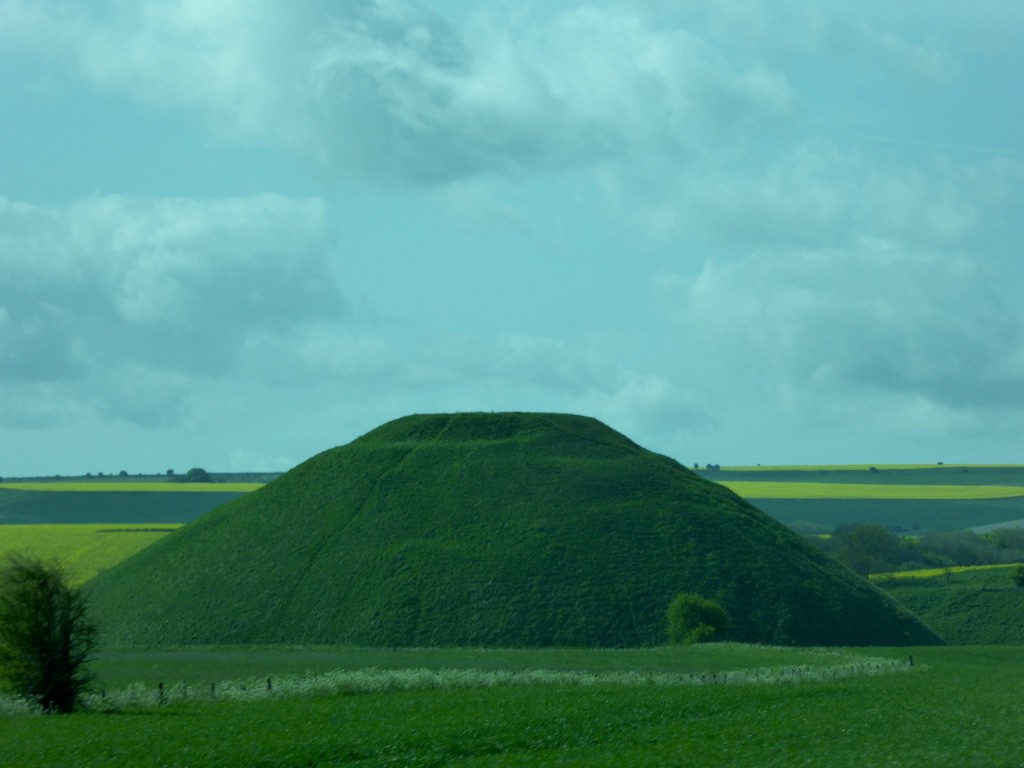
At 30 metres (98 ft) high, Silbury Hill is the tallest prehistoric human-made mound in Europe and one of the largest in the world; it is similar in size to some of the smaller Egyptian pyramids of Giza. Made of chalk it is now grassed over but originally would have gleamed white and been visible for miles. Its original purpose is still highly debated but legend has it that it was the final resting place of King Sil.
Avebury is a Neolithic henge monument containing three stone circles, around the village of Avebury in Wiltshire. One of the best known prehistoric sites in Britain, it contains the largest stone circle in Europe. It is both a tourist attraction and a place of religious importance to contemporary Pagans.
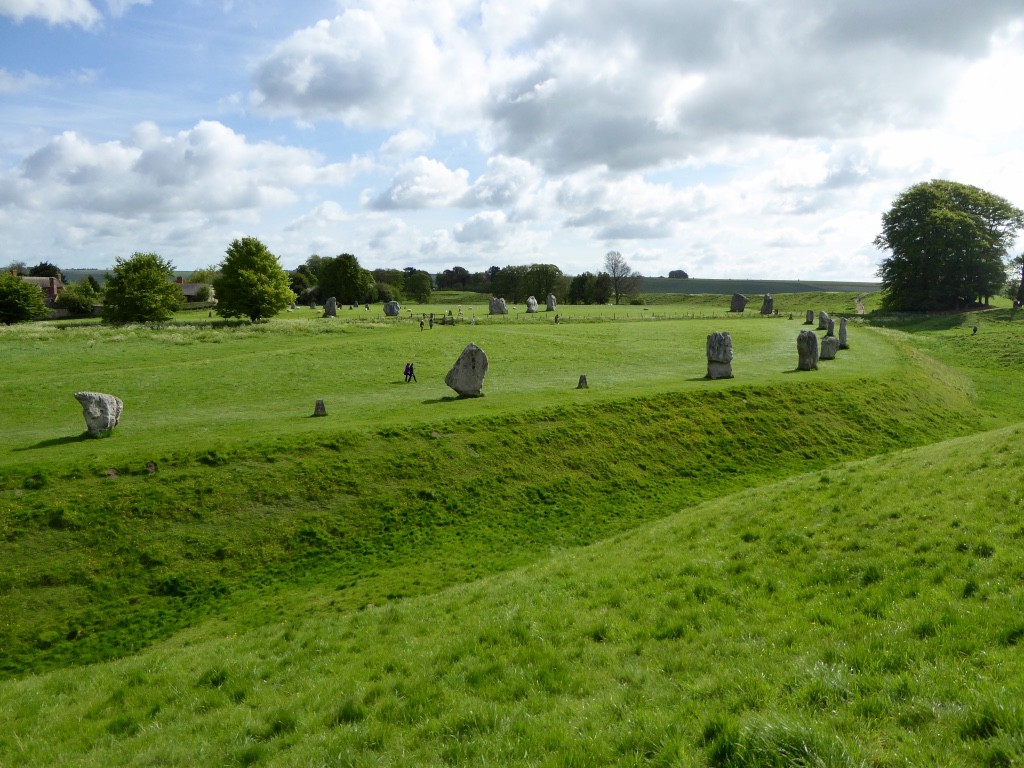
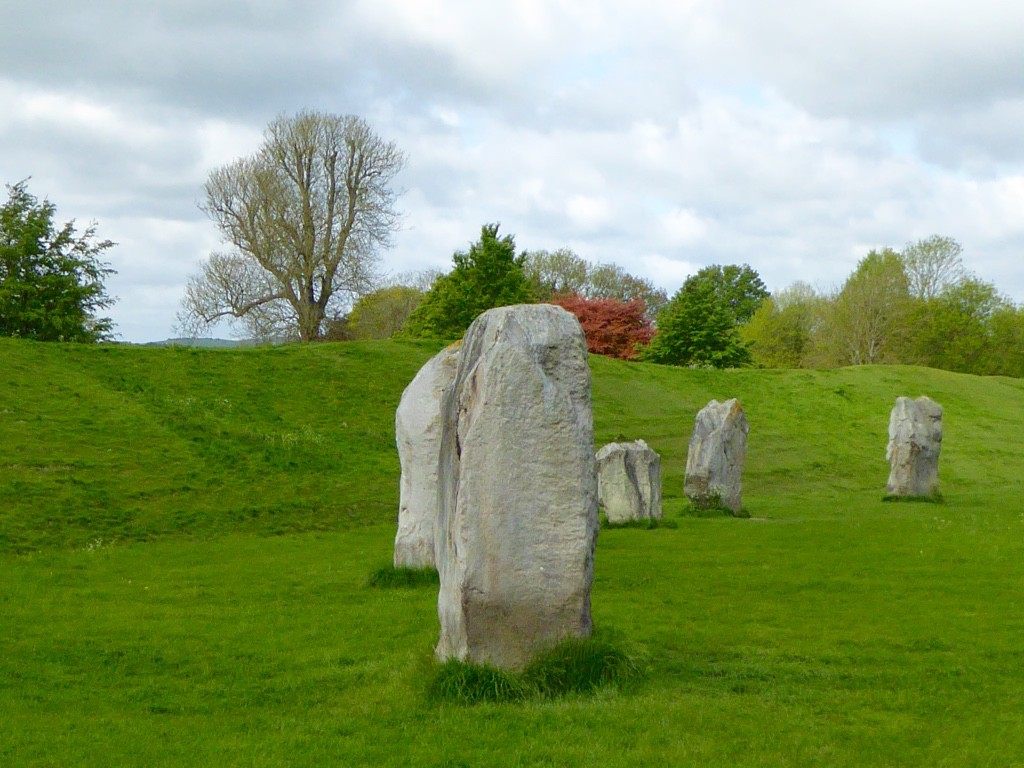
Constructed around 2600 BCE, during the Neolithic, or ‘New Stone Age’, the monument comprises a large henge (a bank and a ditch) with a large outer stone circle and two separate smaller stone circles situated inside the center of the monument.
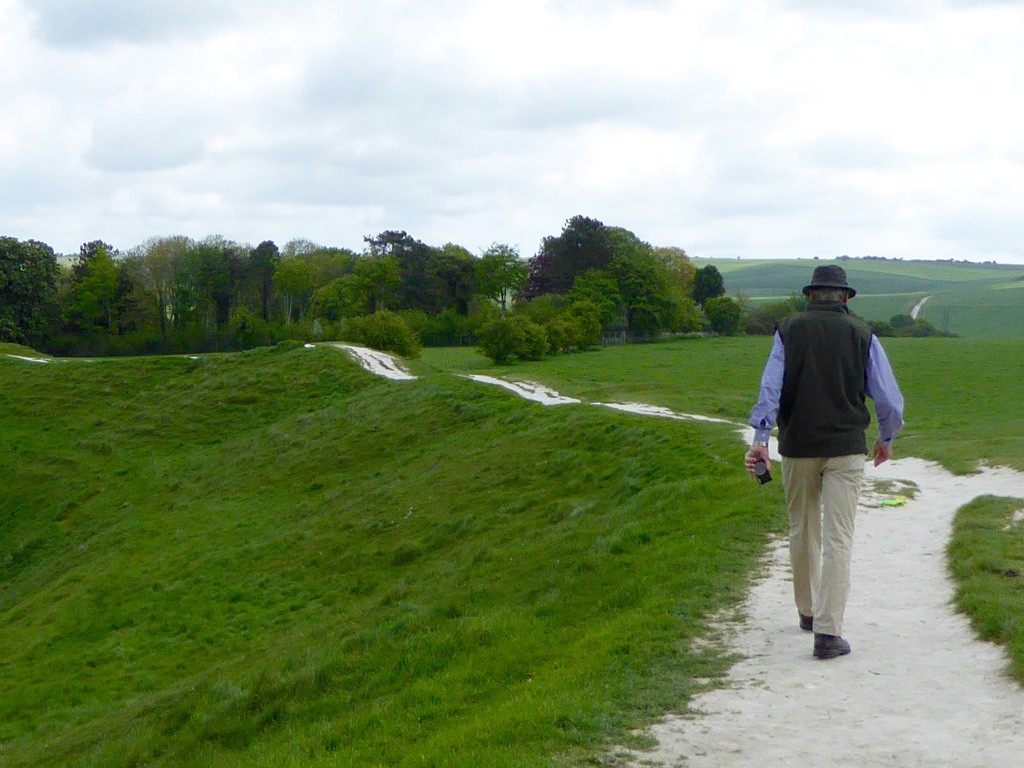
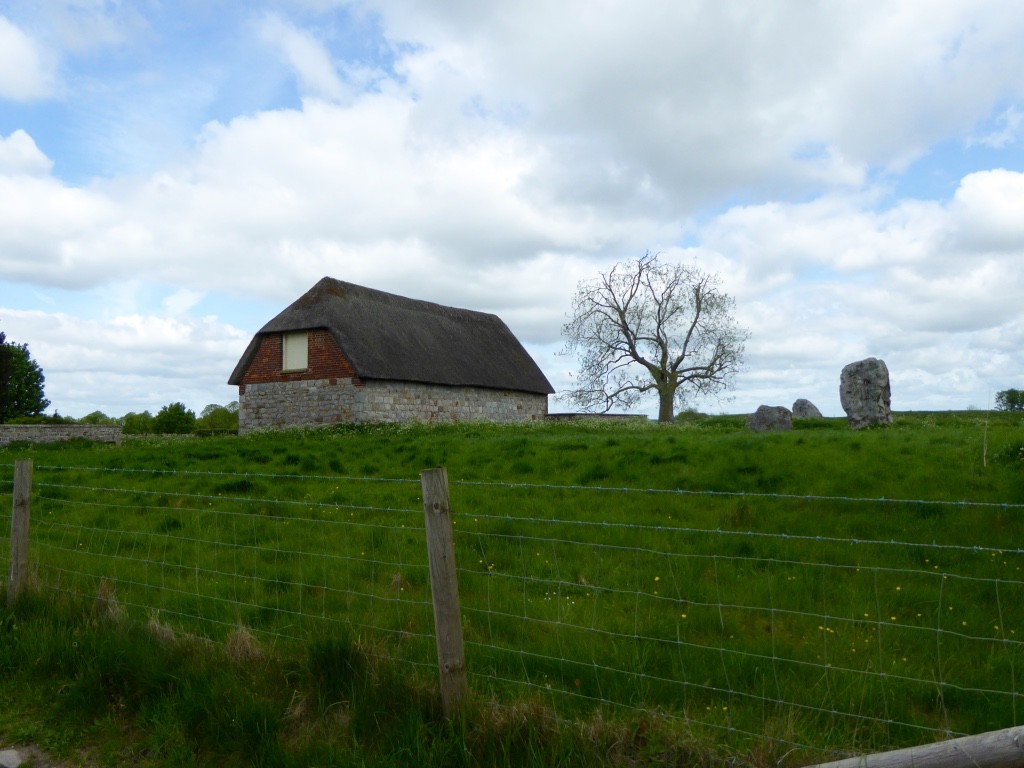
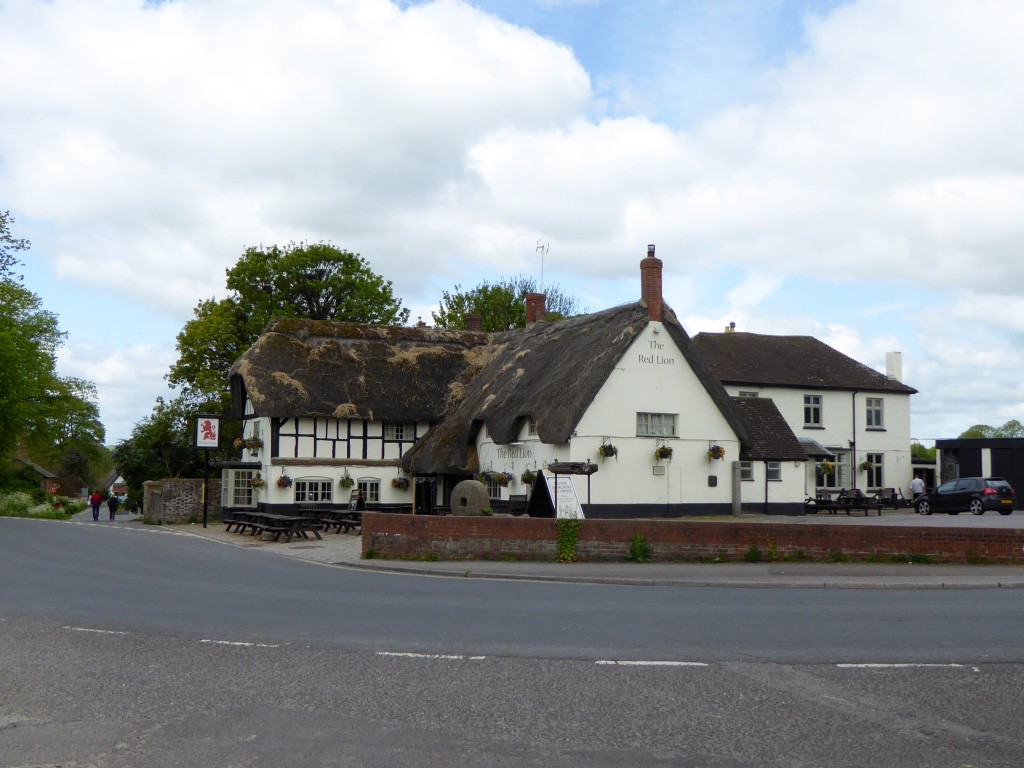
Its original purpose is unknown, although archaeologists believe that it was most likely used for some form of ritual or ceremony. The Avebury monument was a part of a larger prehistoric landscape containing several older monuments nearby, including West Kennet Long Barrow and Silbury Hill.
Leaving Avebury Henge we passed one of the famous White Horses of Wiltshire. The Cherhill white horse is the second oldest of the Wiltshire horses. Very well placed high on a steep slope, the horse is easily visible from below and from a distance.
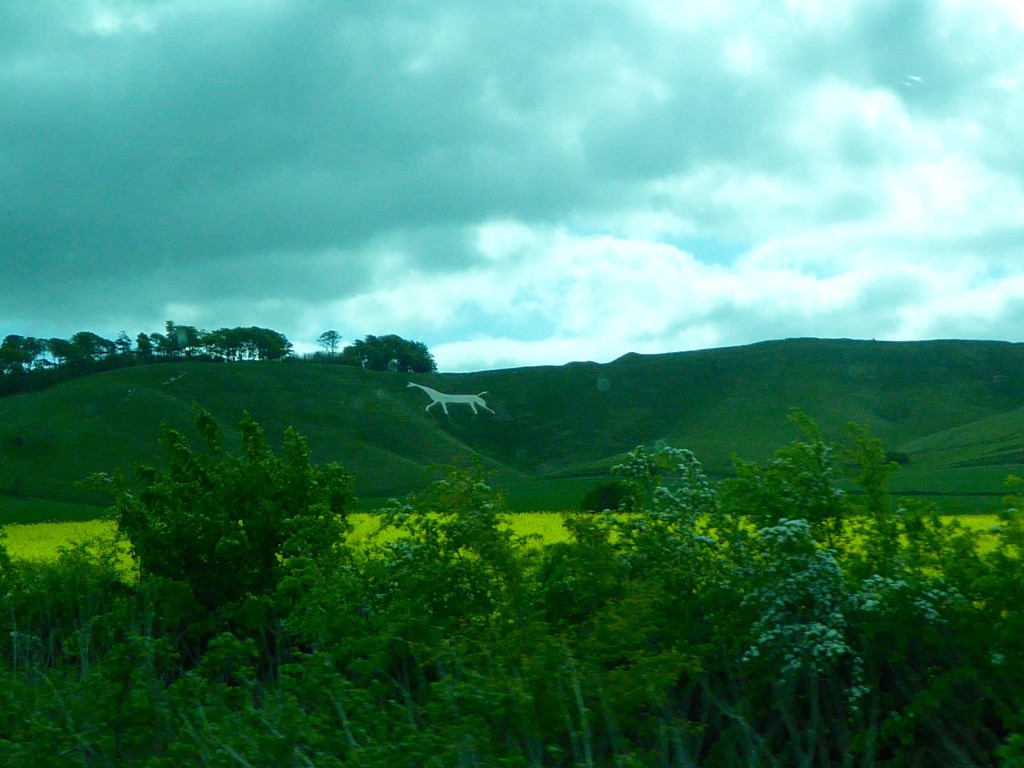
The Cherhill white horse is the work of a Dr. Christopher Alsop of Calne, sometimes referred to as “the mad doctor”. He is said to have directed the marking out of the horse from a distance, calling instructions through a megaphone. Dr. Alsop’s design for the horse may have been influenced by the work of his artist friend George Stubbs, famous for his paintings of horses and other animals.
This white horse once had an unusual feature, a glass eye. The center of the eye was formed from upturned bottles pressed into the ground to reflect the sunlight. Thus the eye apparently had a bright gleaming appearance, and was visible from a considerable distance. Unfortunately vandals kept taking the bottles and, after replacing them on several occasions, they have now been replaced by a concrete eye.
We arrived at the Abbey Gardens in time for lunch. Situated beside the 12th century Abbey Church in the center of medieval Malmesbury and straddling the River Avon, Abbey Gardens was one of my favourite gardens. The main part of the garden was not as large as some of the other gardens we had visited though it did have an extensive dell. It was beautifully maintained, crammed with interesting things and very quirky.
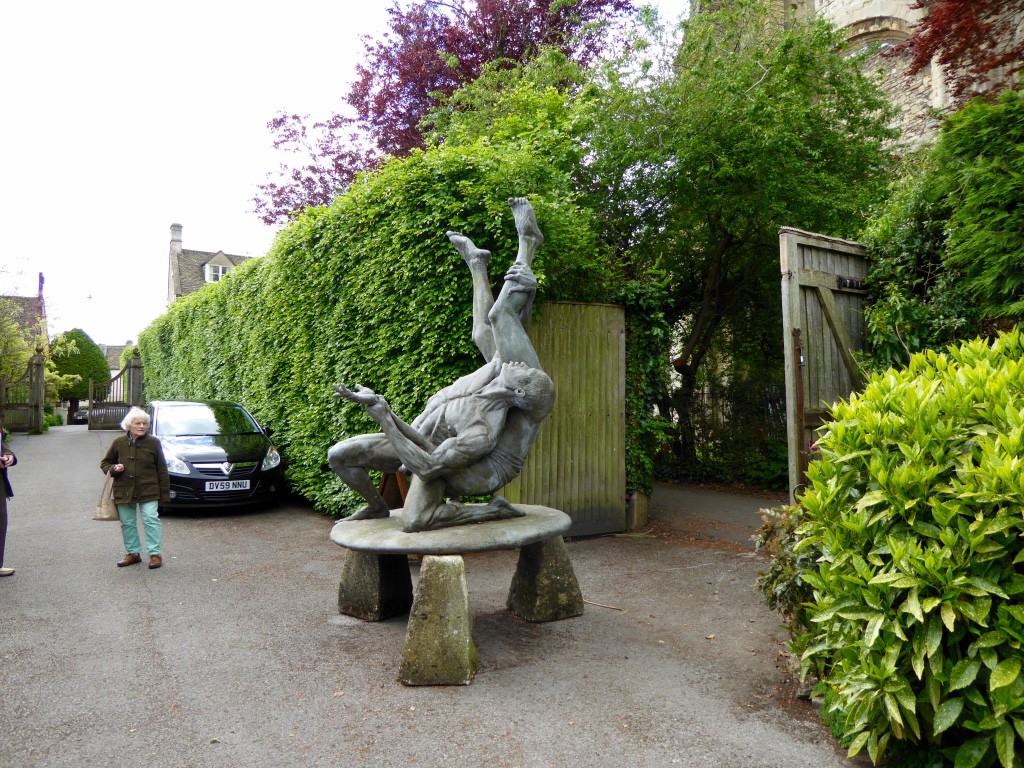
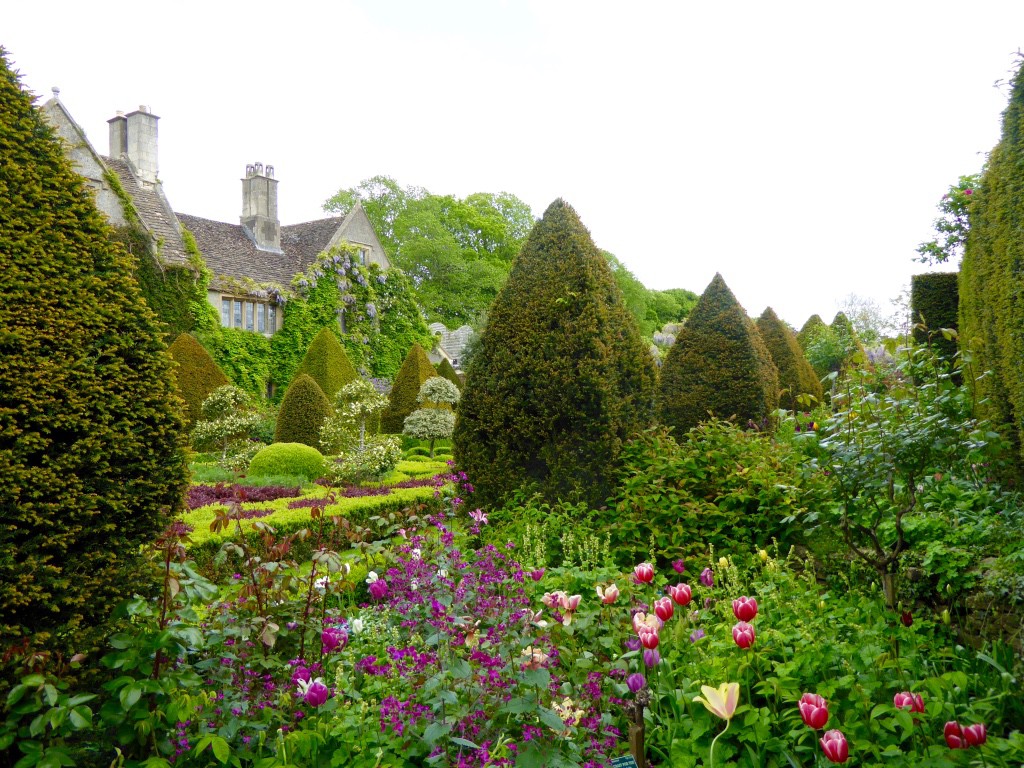
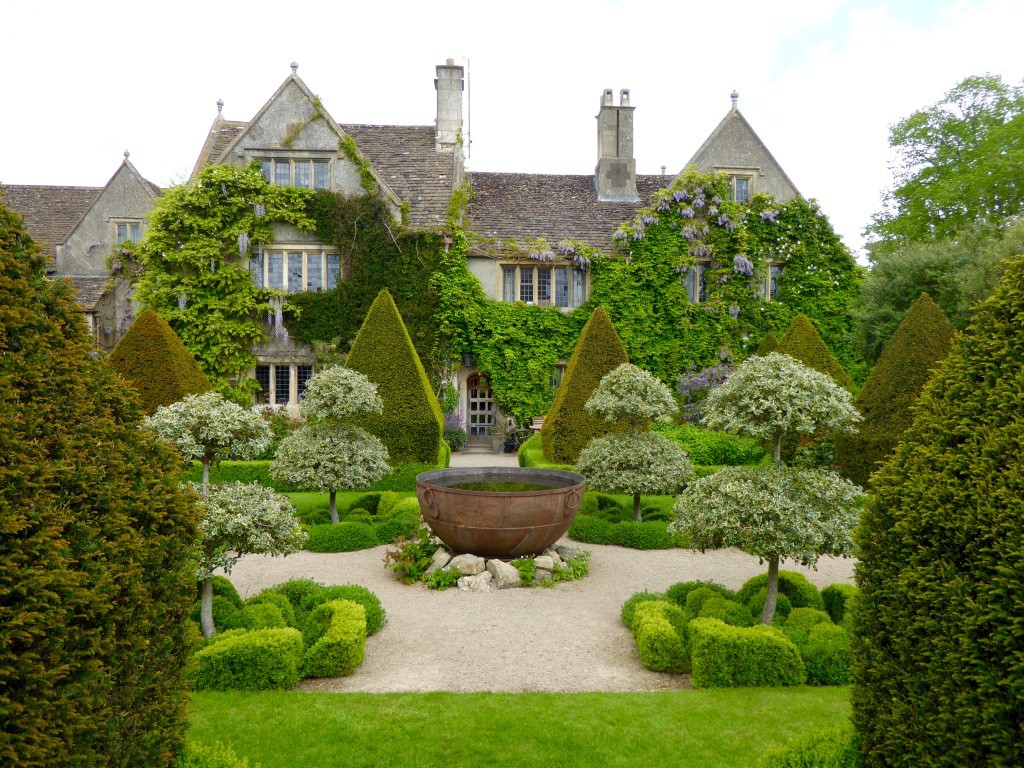
Ian and Barbara Pollard purchased the 16th Century Abbey House in 1994. Empty for 3 years after its previous owners had vacated, it needed a good deal of work and love to bring it back to a comfortable family home. Following the restoration of the house they decided to create a garden that might attract visitors from around the world.

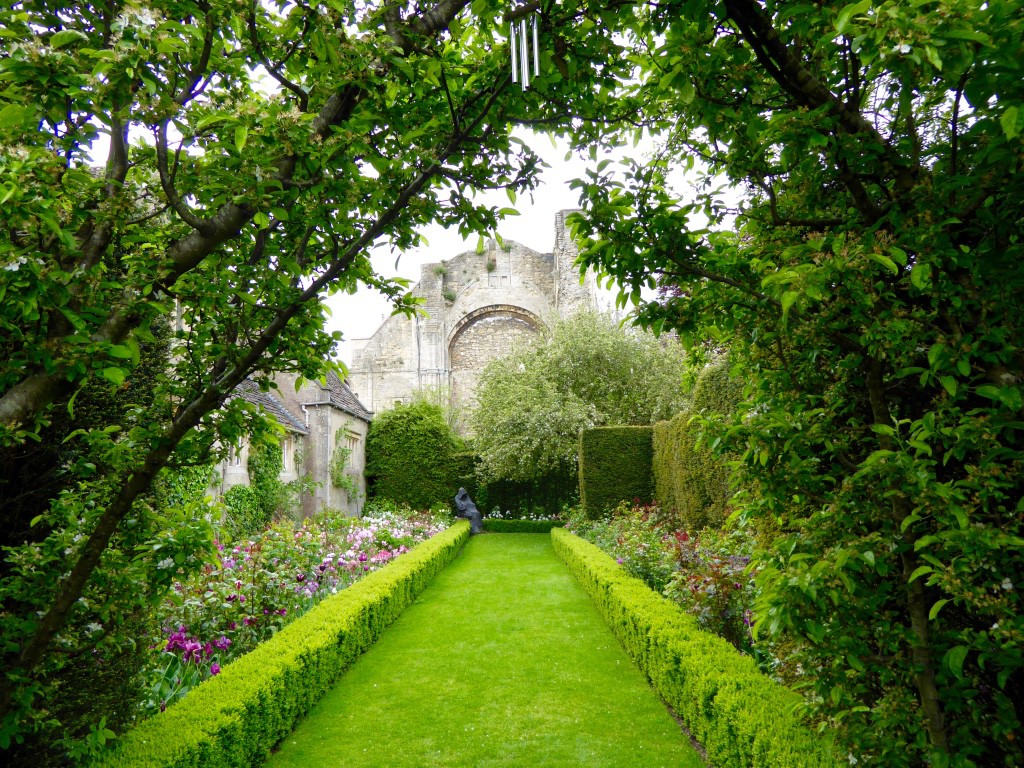
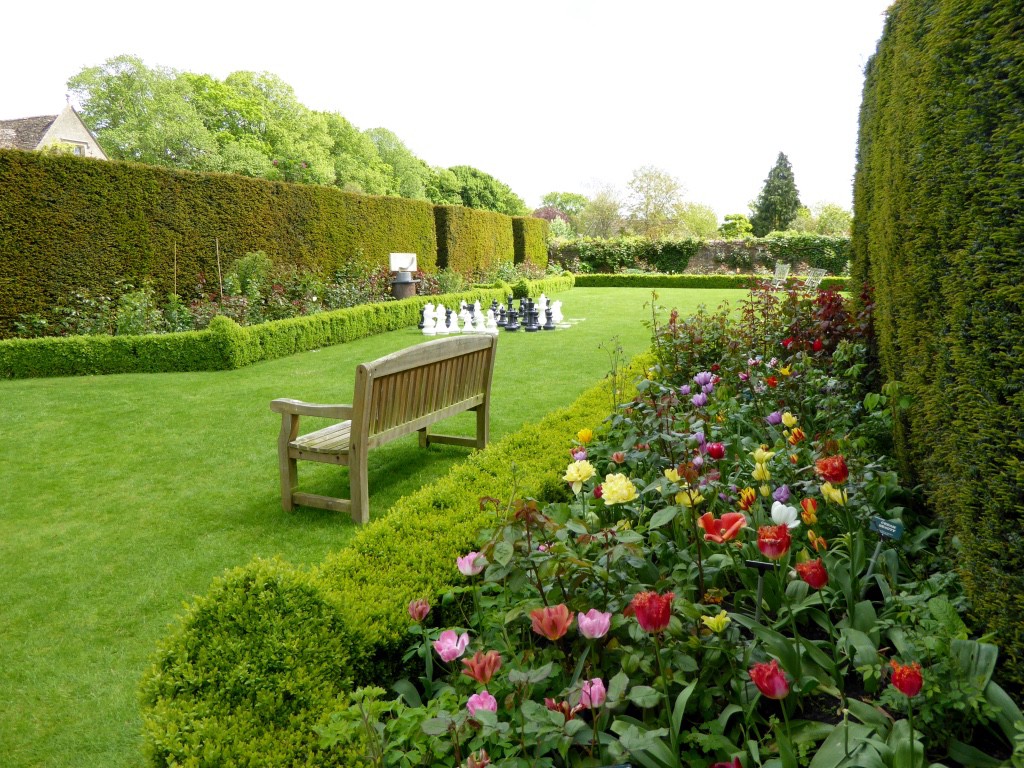
Over the following years they dedicated every waking moment to the garden, rarely going outside the garden gates. Featuring formal knot gardens, spring bulbs, tulips (third of a million), hostas, laburnum tunnel, colonnade walk, roses (largest collection in the UK), japanese maples, fruit trees, double herbaceous borders, irises, alstroemerias, herb garden, monastic fish ponds and with woodland and riverside walks where wildlife from water voles, the occasional otter, goldcrests, longtailed tits, treecreepers, kingfishers, woodpeckers to sparrowhawks, buzzards and swans appear – there is plenty to see!!
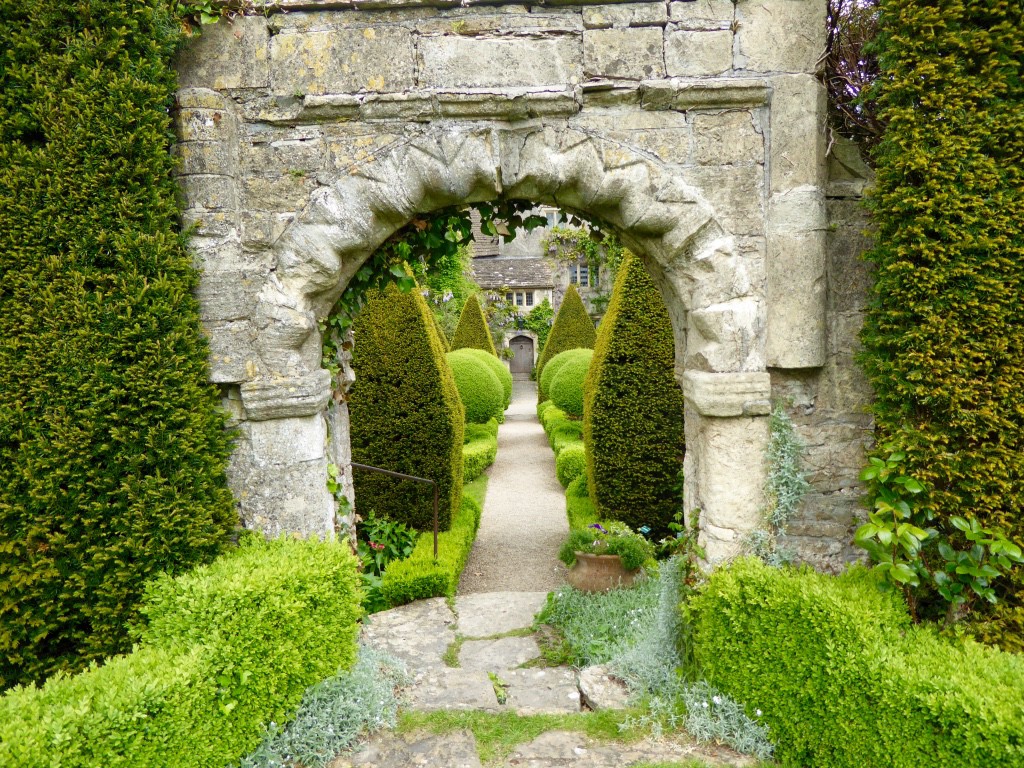
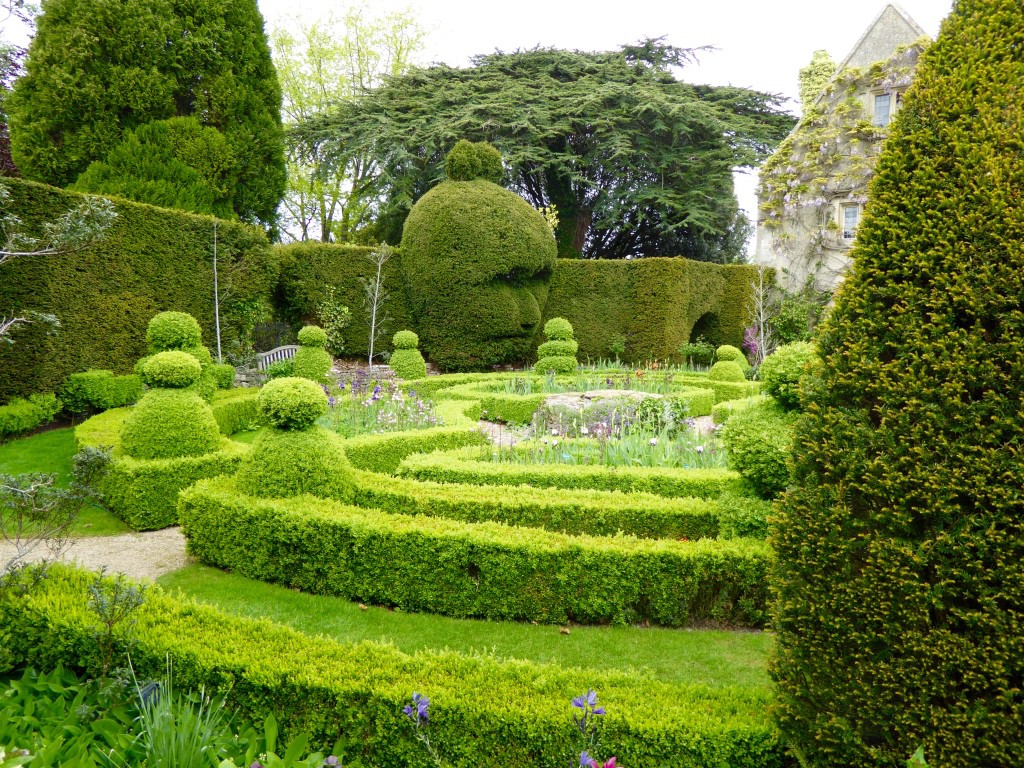

Over the years the Pollards have become well known as “The Naked Gardeners” both because they often garden naked and have Clothes Optional Days, when the gardens are open to those who wish to spend their time (within the garden boundaries) without their clothes – though this is not compulsory. The day we visited was not one of these days!
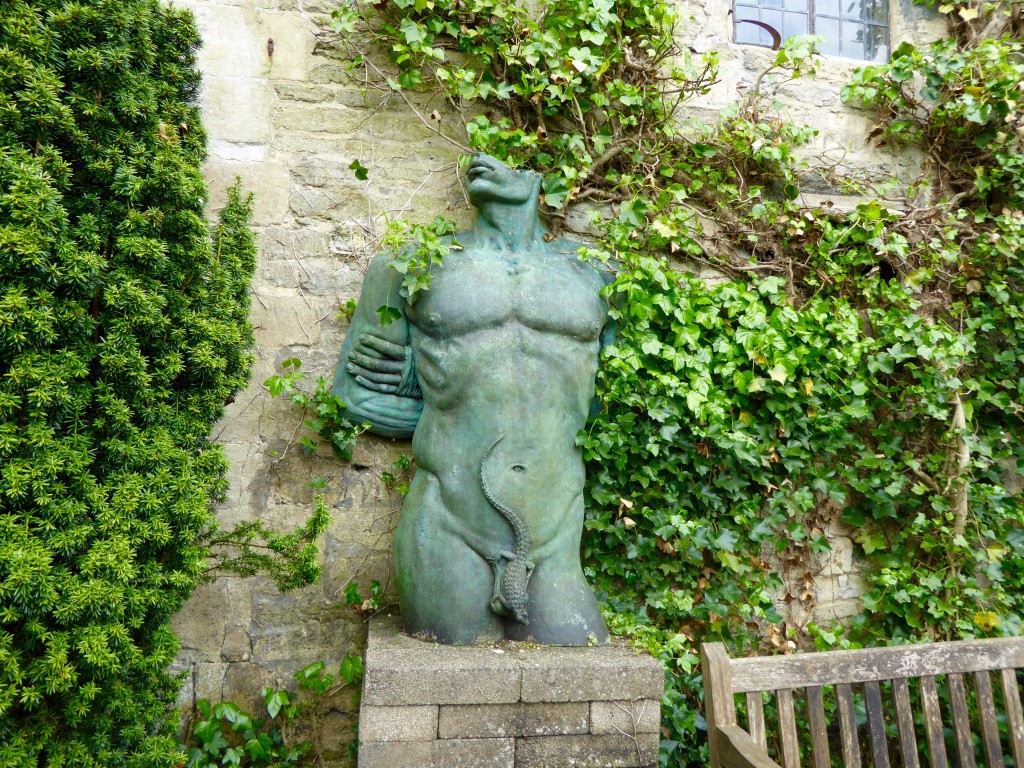
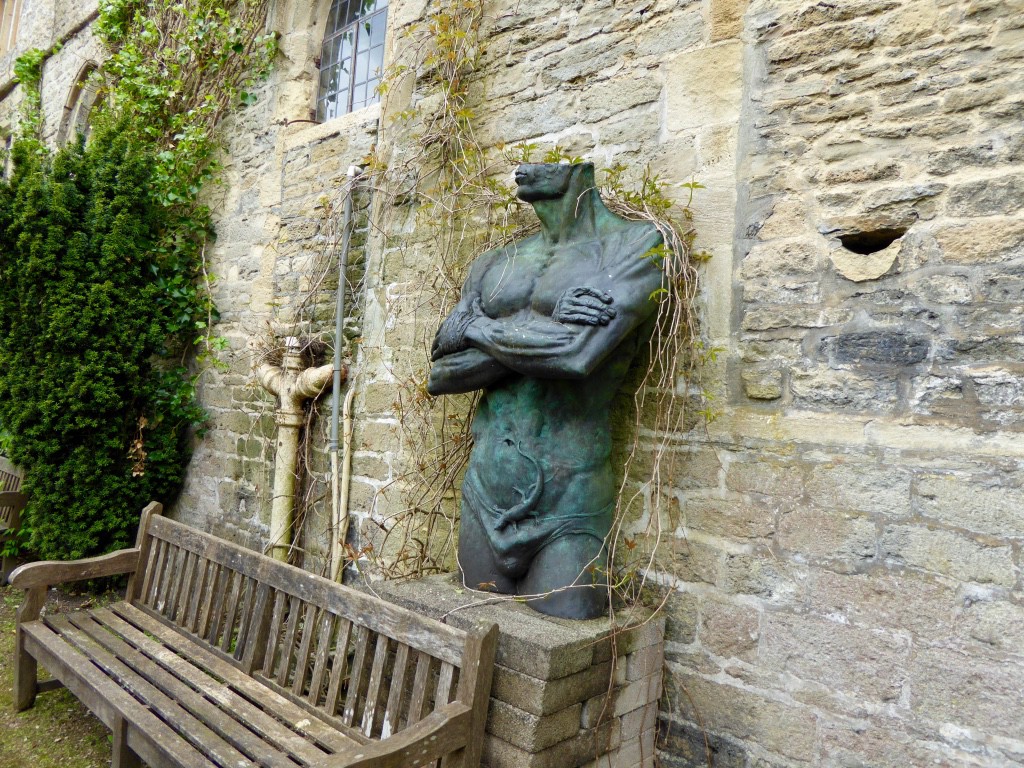
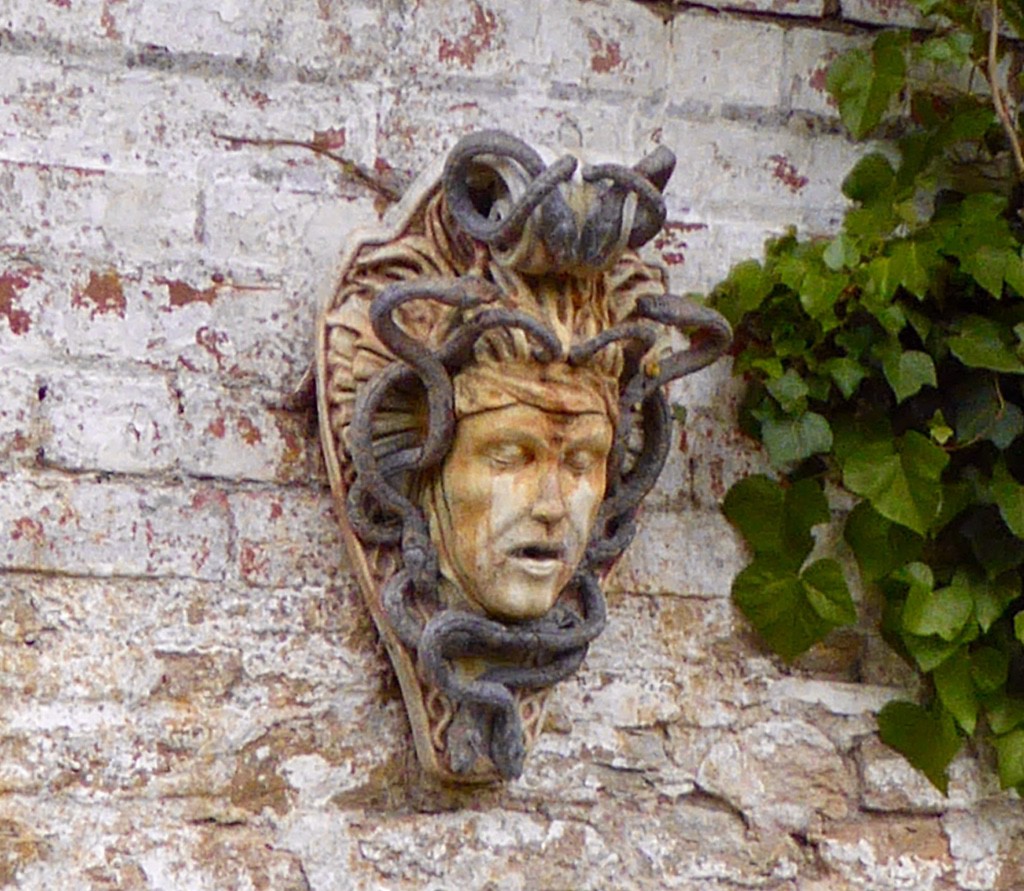
Unfortunately the Pollards have separated amidst claims of naked infidelity and there are fears Abbey House Gardens could be lost when the 16th century mansion is sold – disappointing thousands of naked tourists who visit every year as well as the many millions of visitors who have admired the garden.
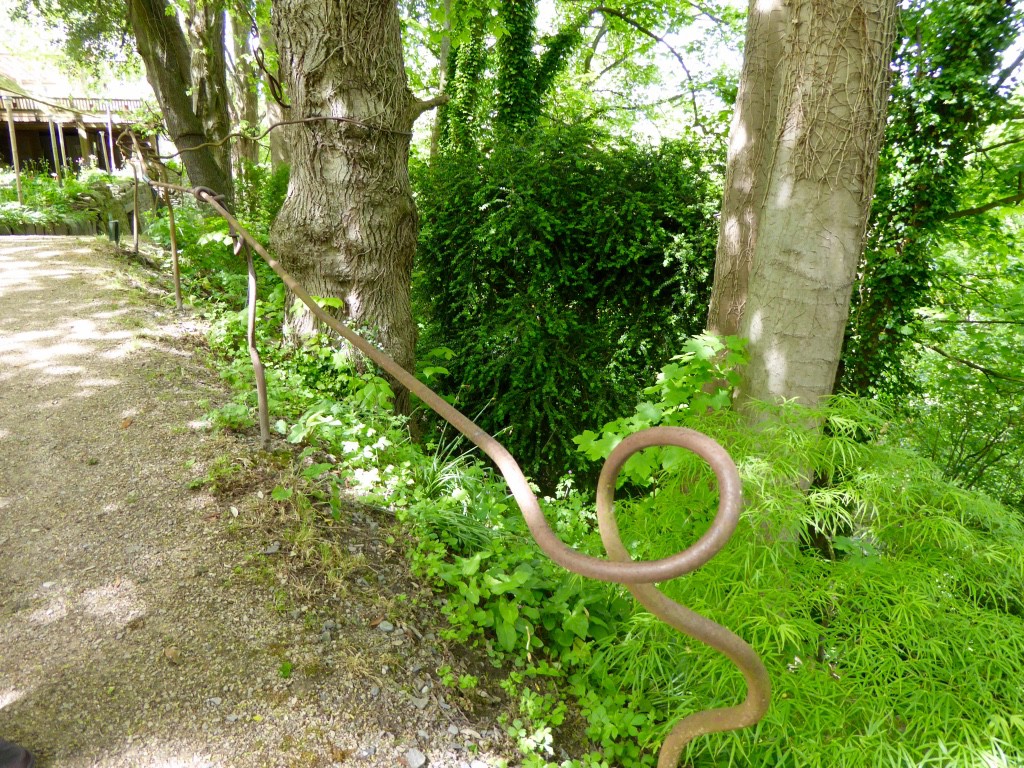
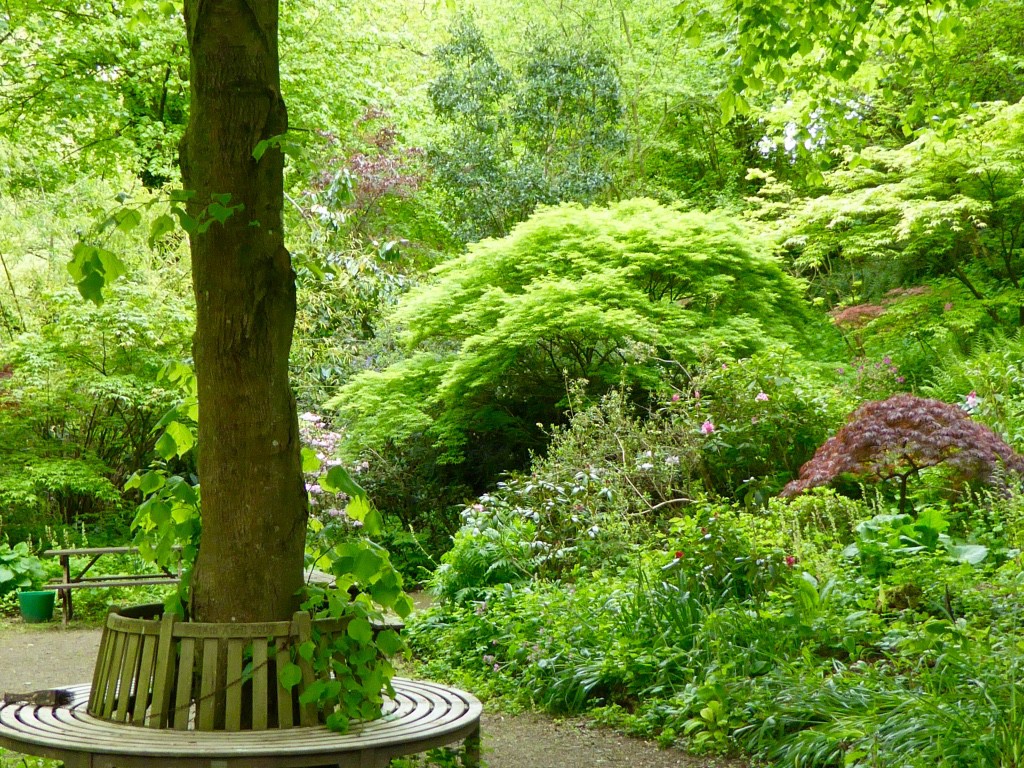
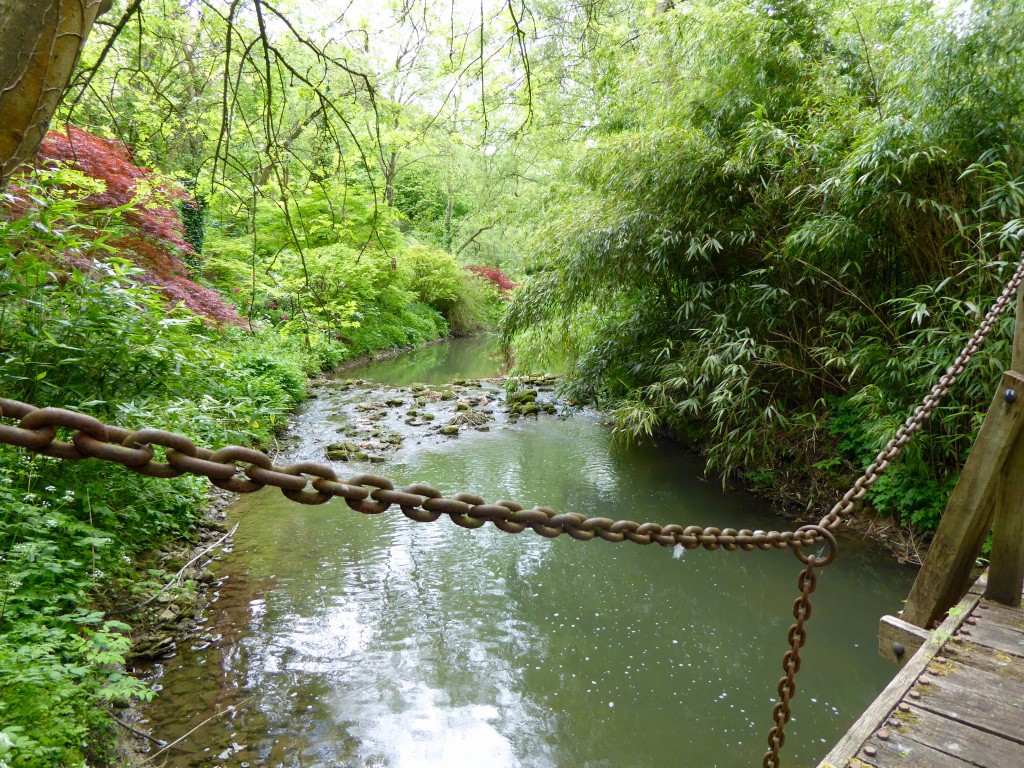
Our next stop was the village of Bibury, was once described by William Morris as ‘the most beautiful village in the Cotswolds’.
The village center clusters around a square near St. Mary’s, a Saxon church. Some of the Saxon remains inside the church are replicas as the originals are housed in the British Museum.
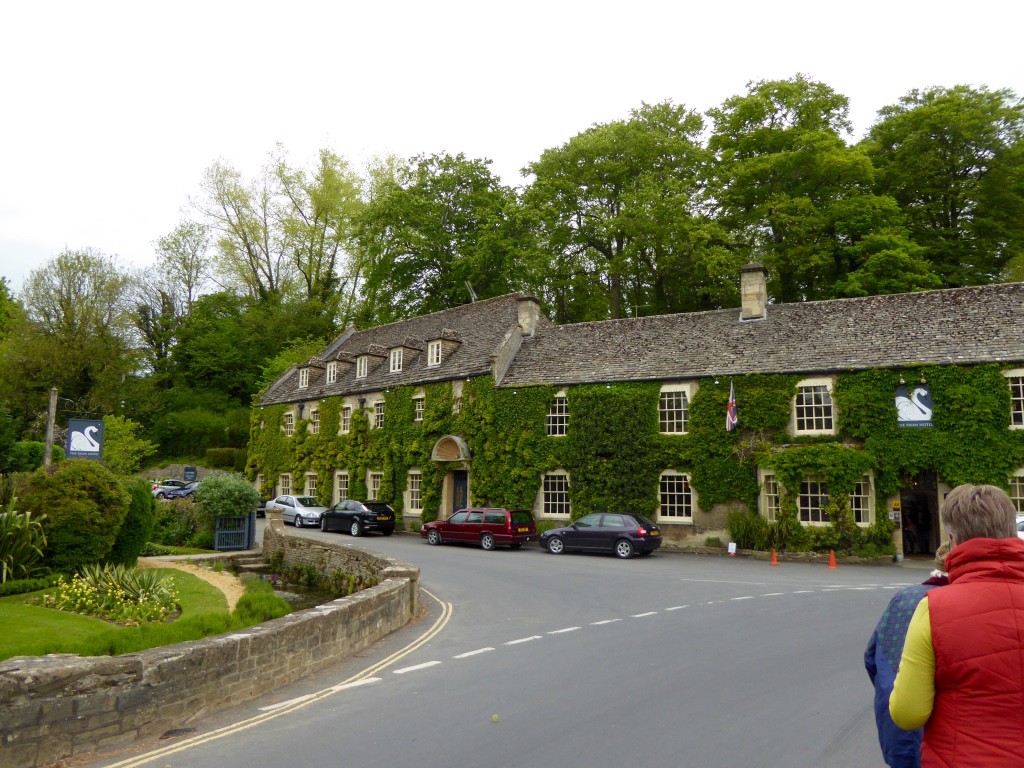
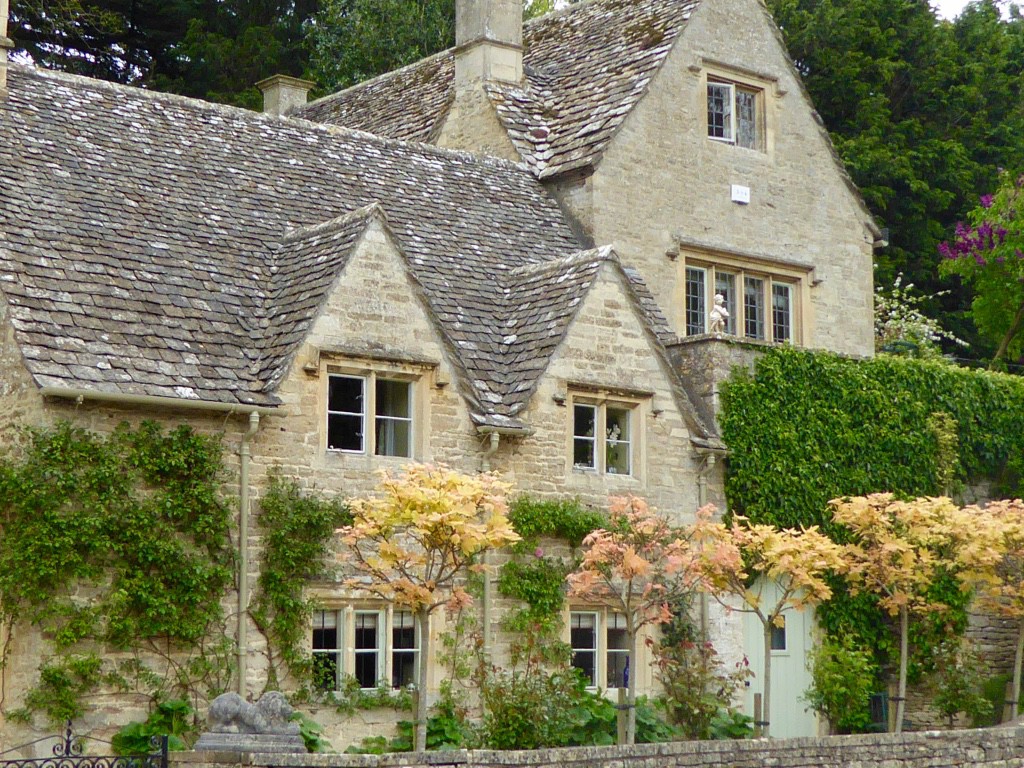
One of the village’s main tourist spots and overlooking a water meadow and the river is Arlington Row, a group of ancient cottages with steeply pitched roofs that were built in 1380 as a monastic wool store and converted into weavers’ cottages in the 17th century. Henry Ford thought Arlington Row was an icon of England. On a trip to the Cotswolds he tried to buy the entire row of houses to ship back to Michigan.
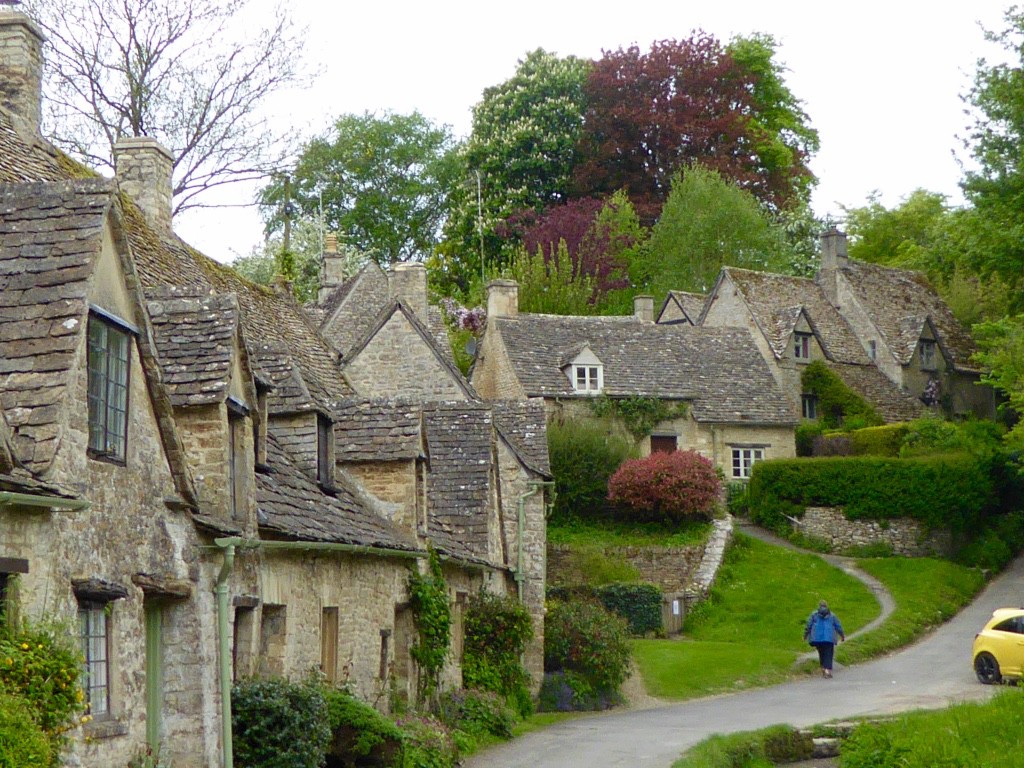
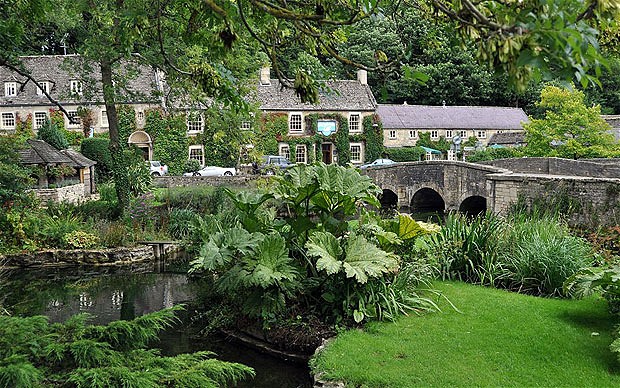
A couple of horses who escaped and took off down the road delayed our travel to the next garden. Their owners chased them for a number of miles down the busy road until someone with a bit of horse sense managed to block them
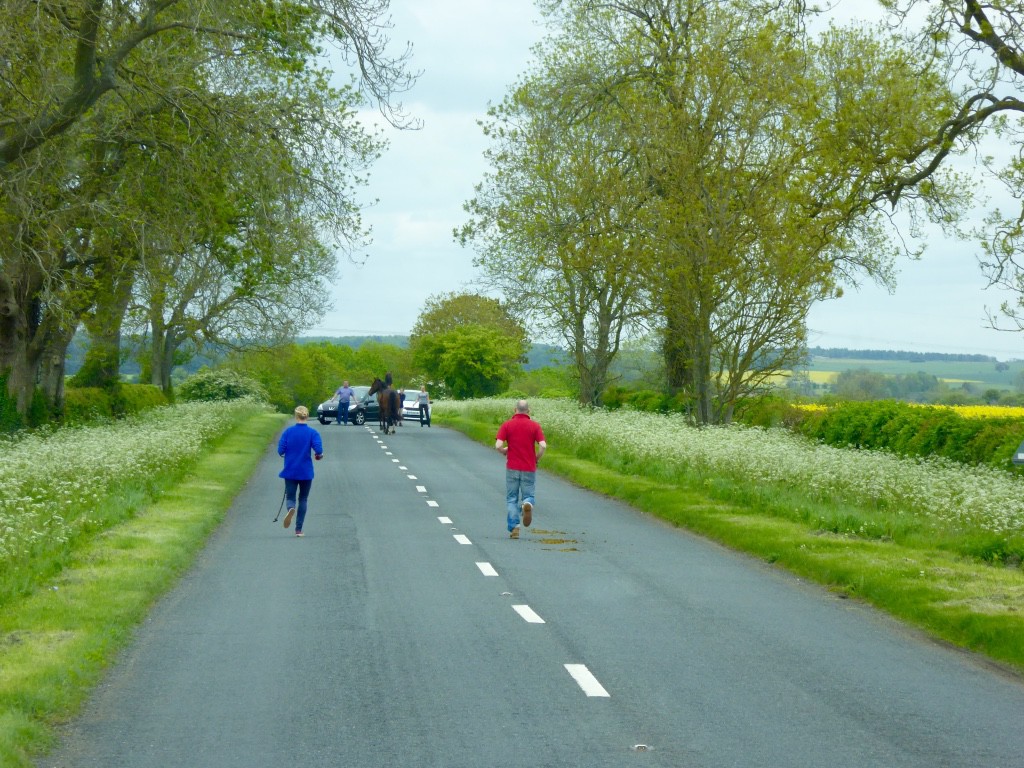
Coughton Court has been the home of the Throckmorton family since 1409. The Throckmorton family is the oldest catholic family in England having remained Roman Catholics since the reformation.
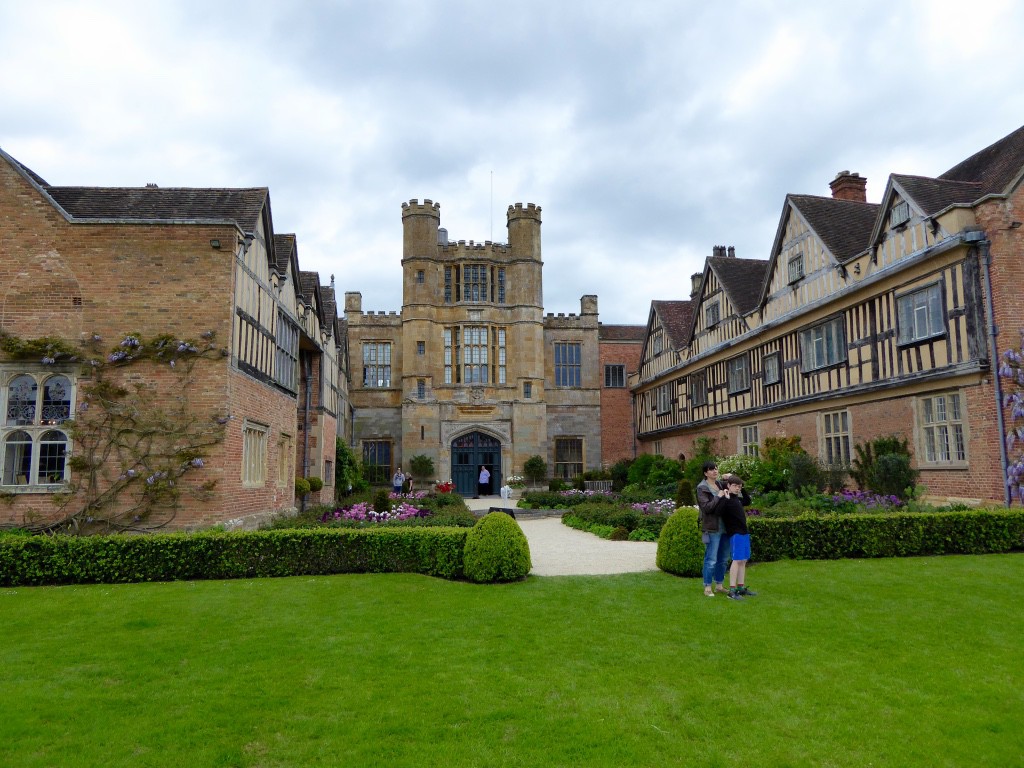
Various members of the family were involved in, or connected with, pre-Reformation plots and conspiracies including the Throckmorton Plot of 1583 and the Gunpowder Plot of 1605.
Although Royalist sympathisers during the Civil War, the family was one of very few recusant families to survive the turbulent 16th and 17th centuries with their estates intact. They went on to become leaders in Catholic emancipation in the 18th and 19th Centuries.
The Throckmorton Family Gardens at Coughton Court are still owned and managed by the family. Clare McLaren-Throckmorton together with her daughter, acclaimed garden designer Christina Williams, has devoted the past 15 years – with the support of a dedicated team of gardeners – to developing what is now one of the finest gardens in Britain.
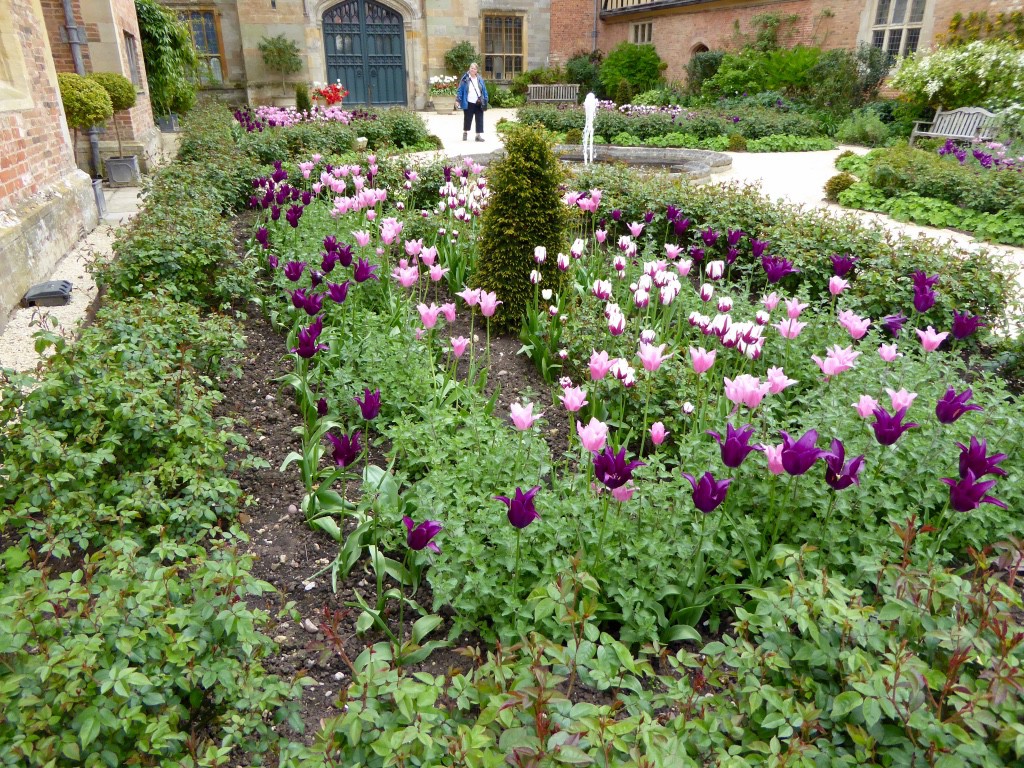
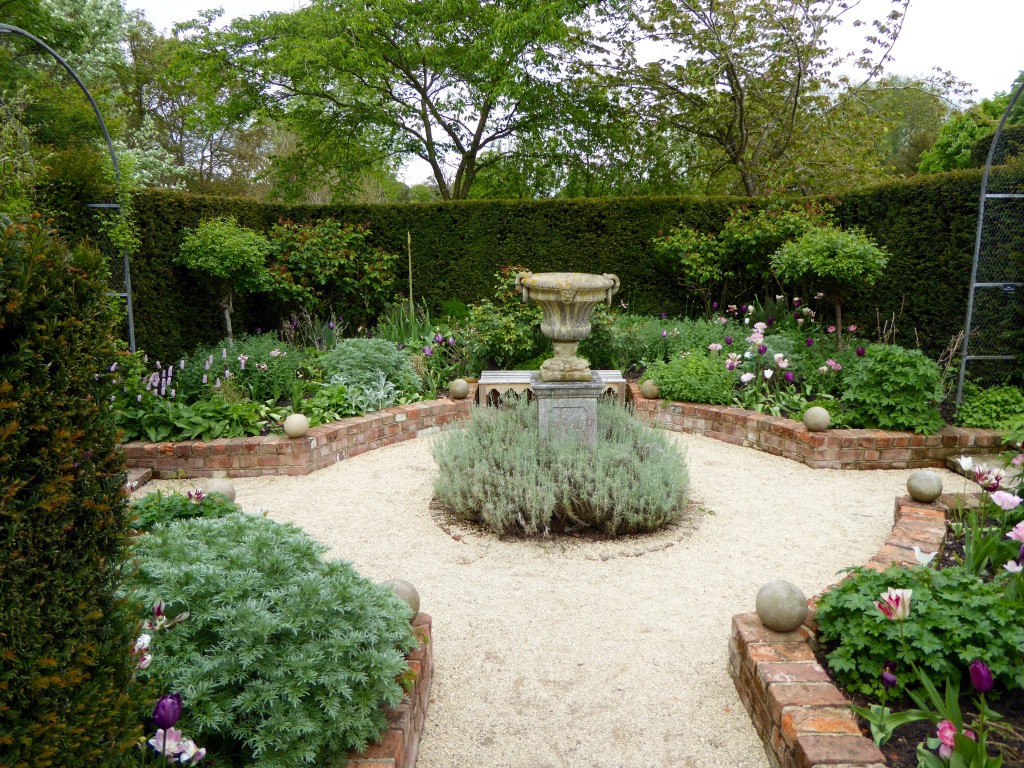
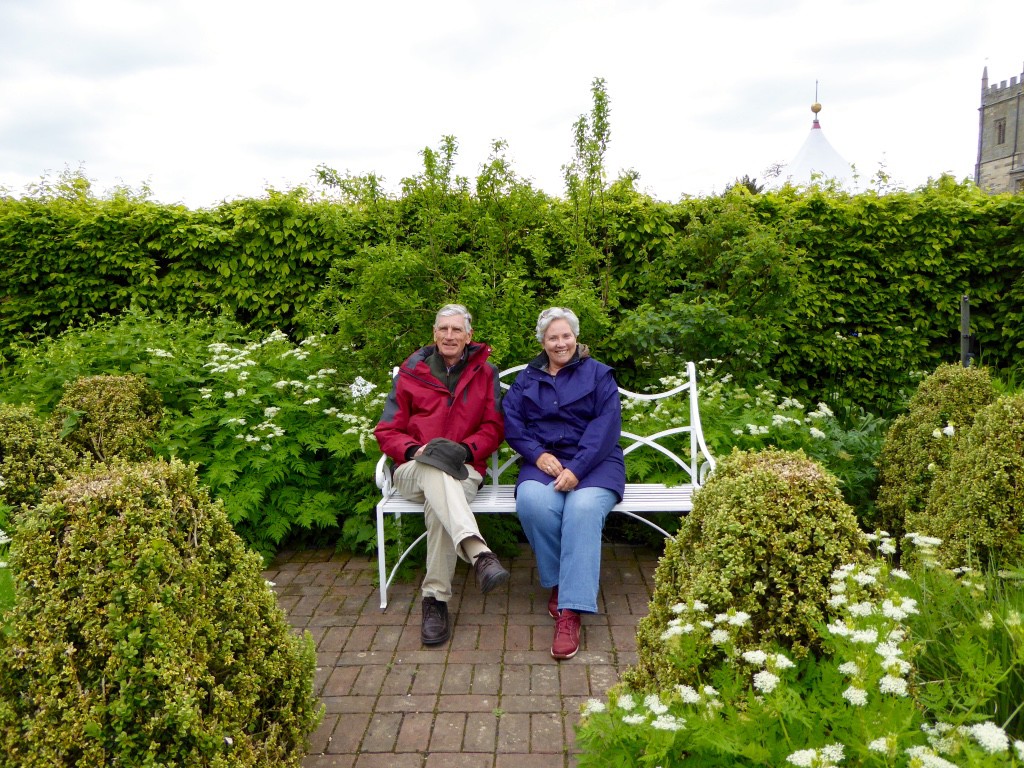
Behind the Tudor gatehouse house you will find the courtyard with its fine Elizabethan half-timbering, where a knot garden leads to lawns and fine vistas of the Warwickshire countryside.
The house stands in 25 acres of grounds. The centerpiece is the famous walled garden, with a concentration of roses and herbaceous plants. There is something for everyone in horticultural terms: a bog garden, formal lawns, vegetable garden, orchard, riverside walks, and a formal garden in the courtyard.
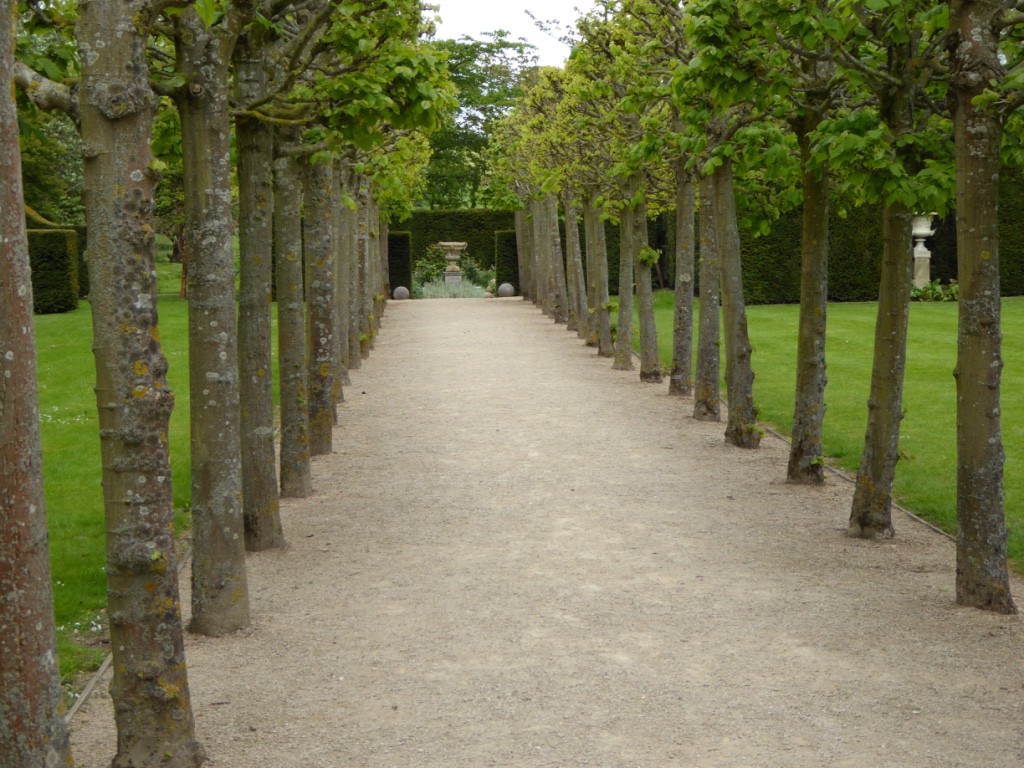
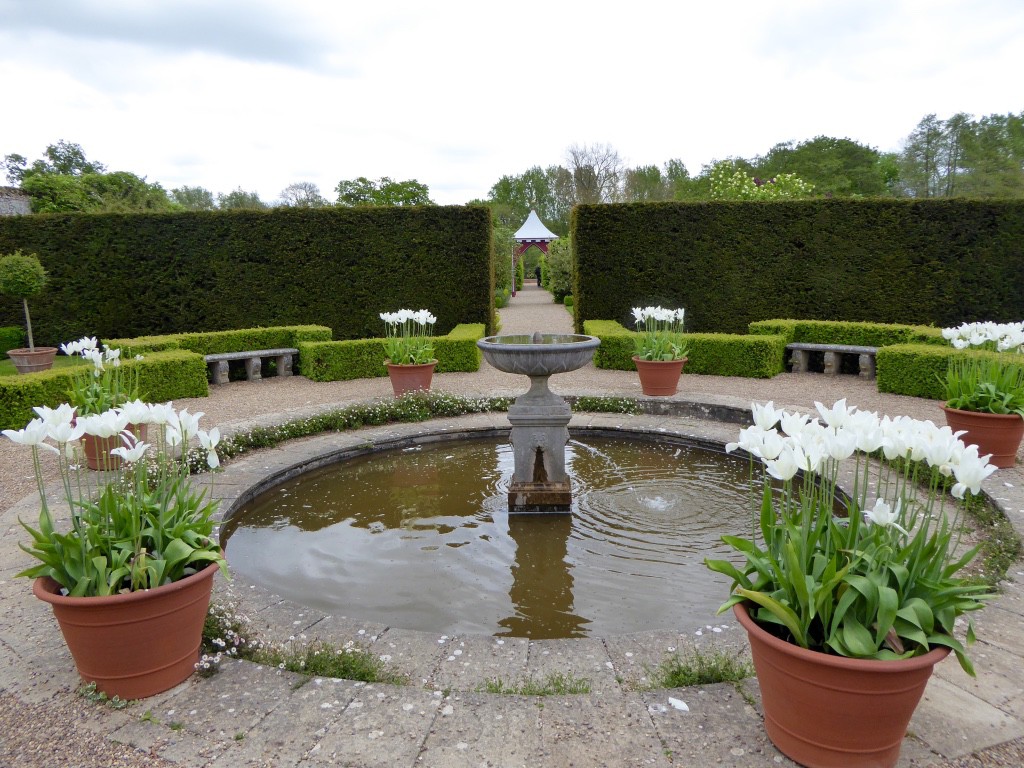
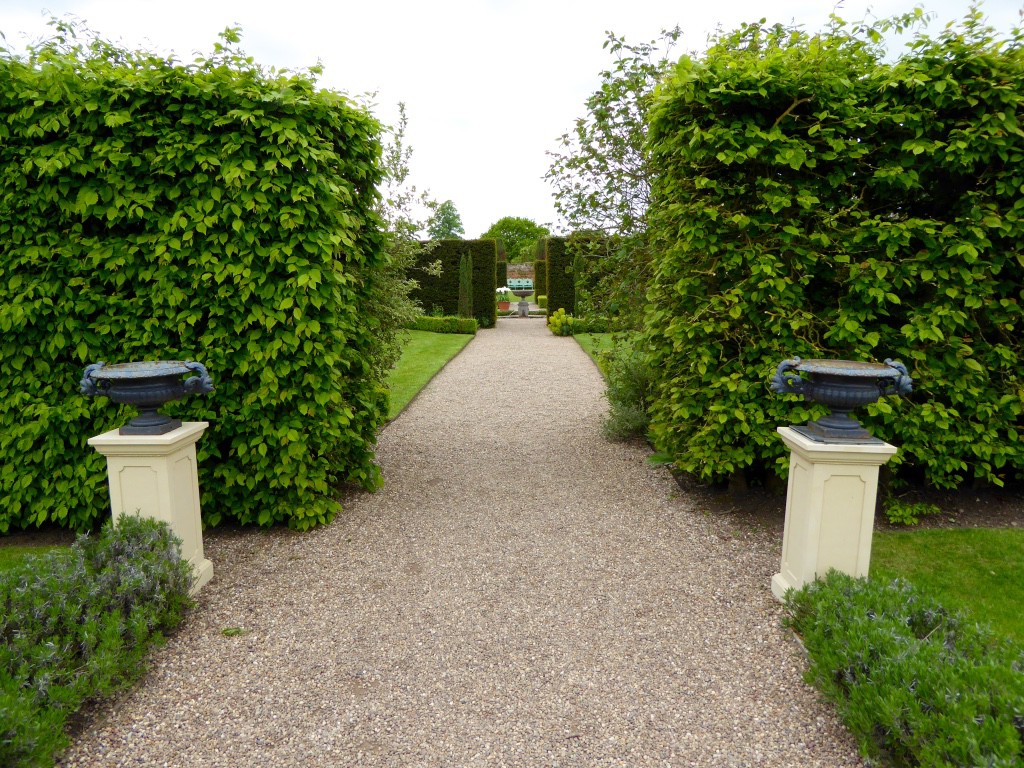
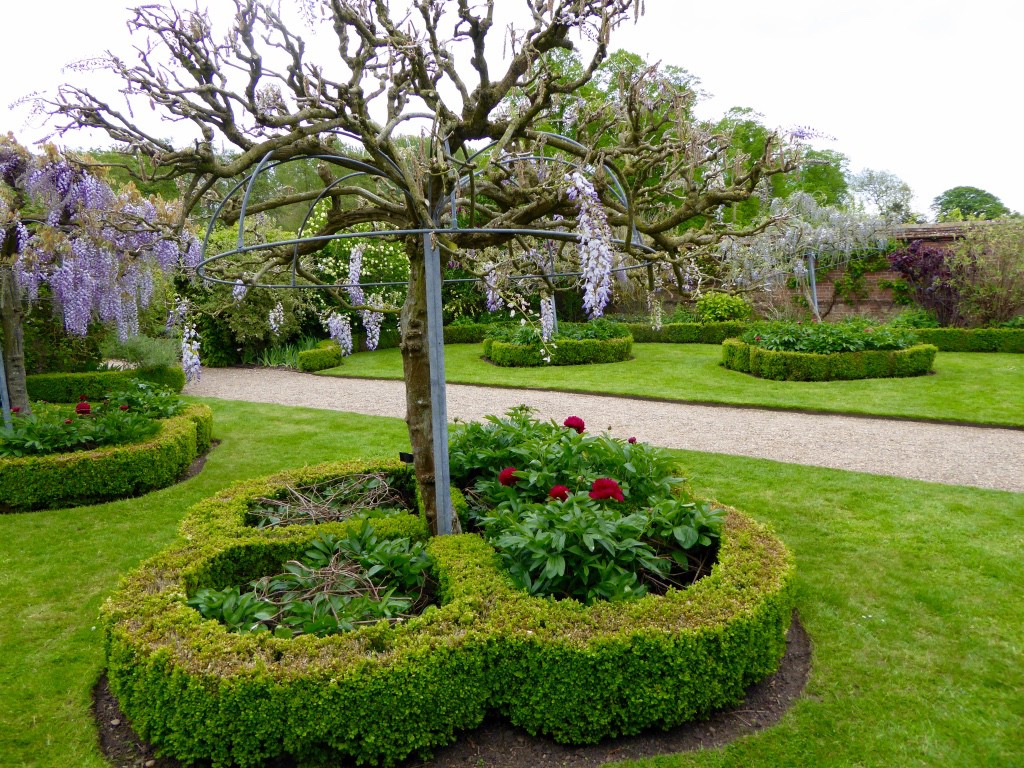
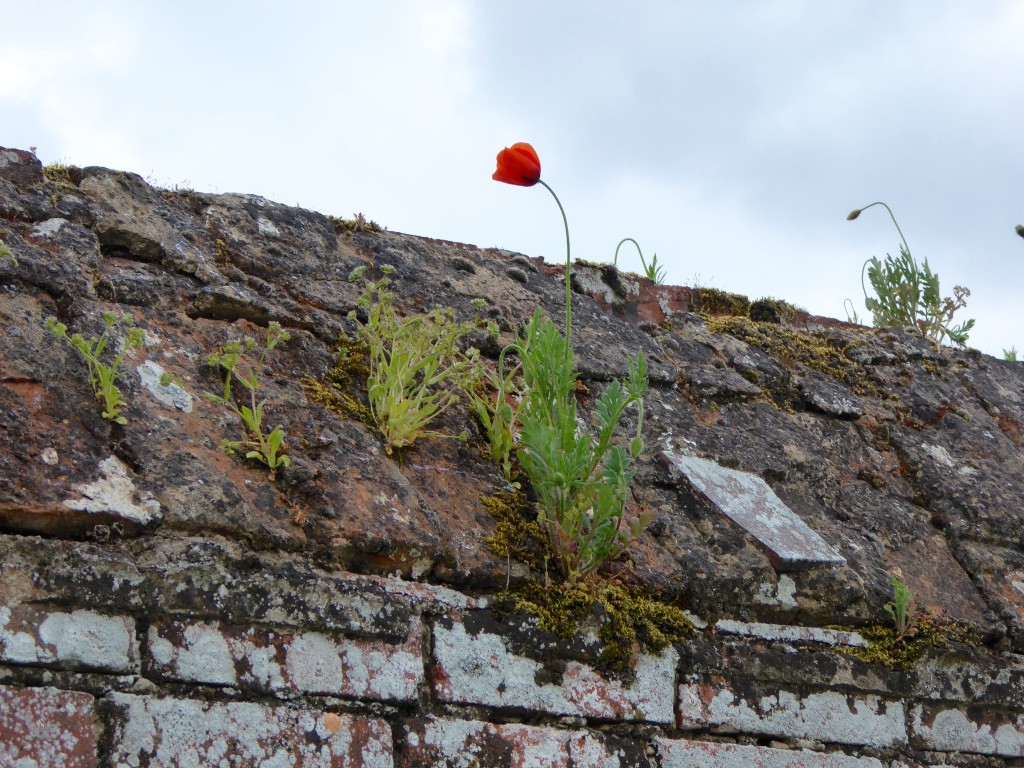
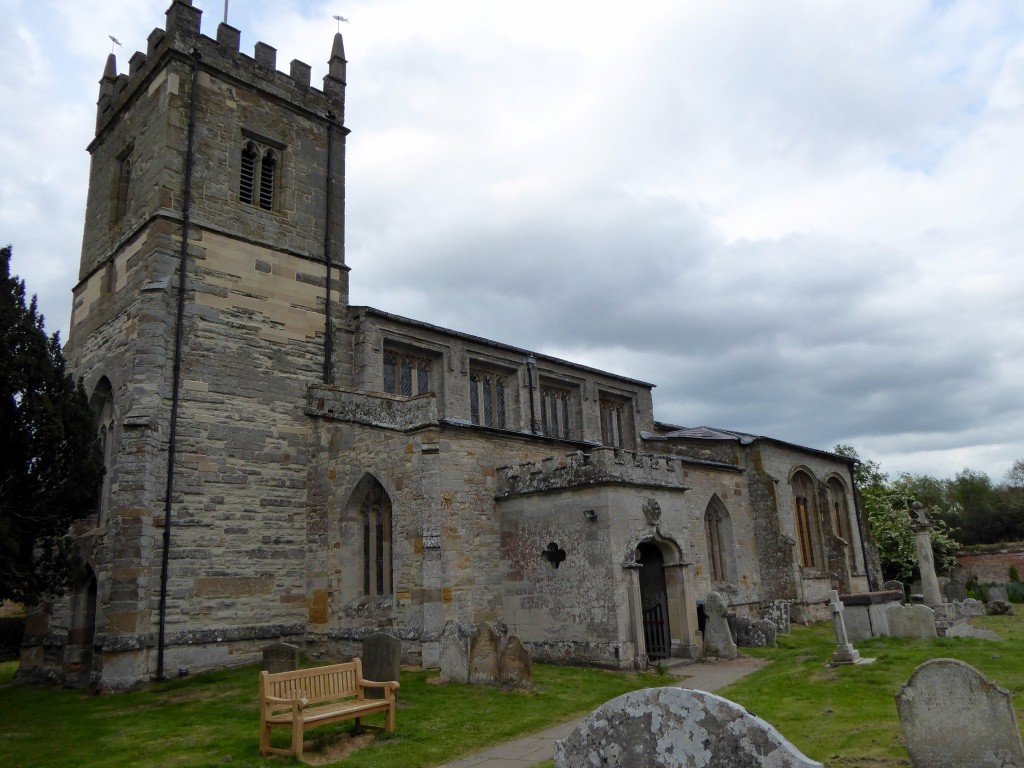
Close by, the Catholic Church of St Peter, St Paul and St Elizabeth was commissioned by Sir Robert Throckmorton, 8th Baronet, soon after the emancipation acts were passed which permitted the building of non-Anglican places of worship.
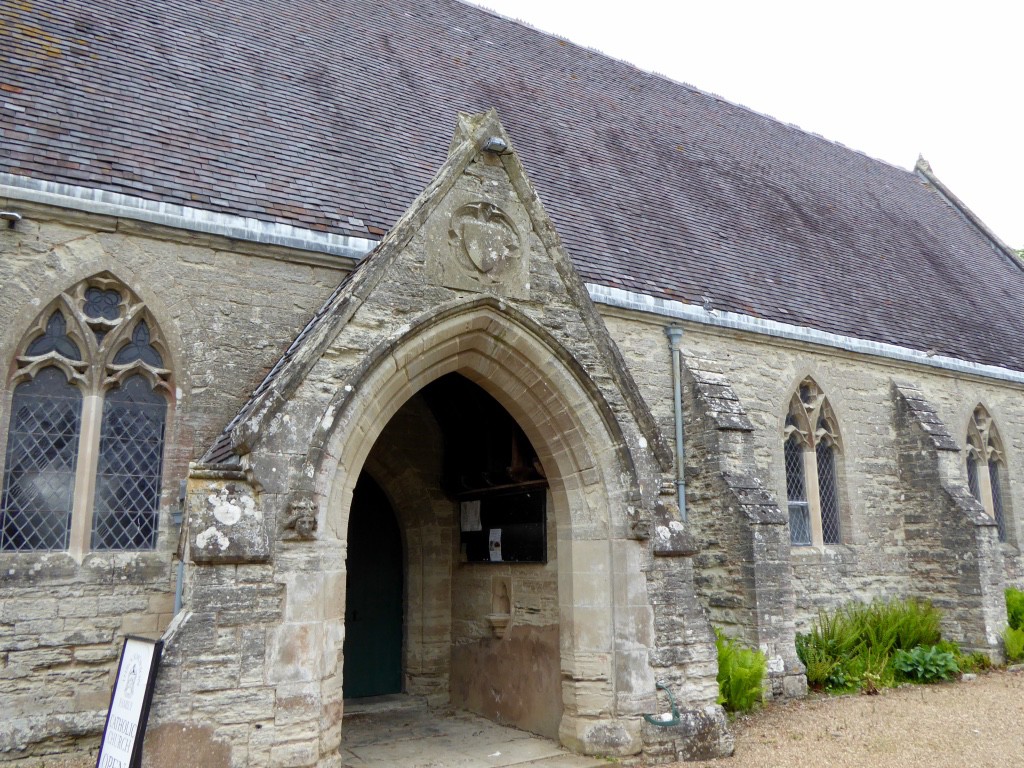
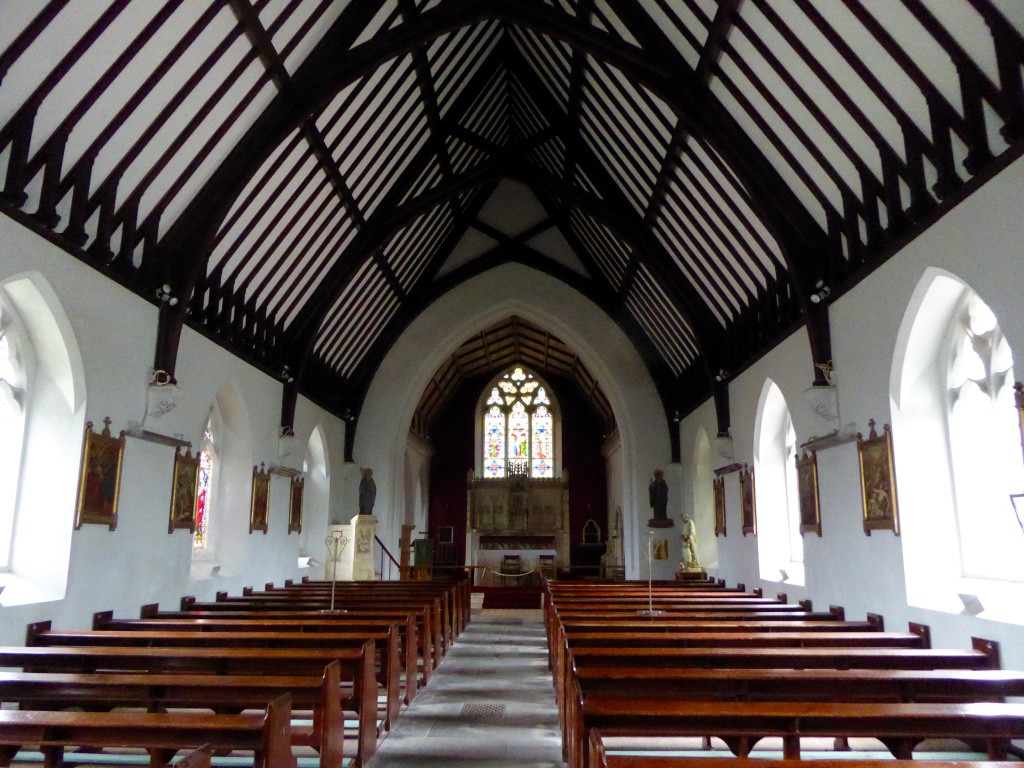
Tomorrow it is on to Hidcote and Kiftsgate – what a treat!!